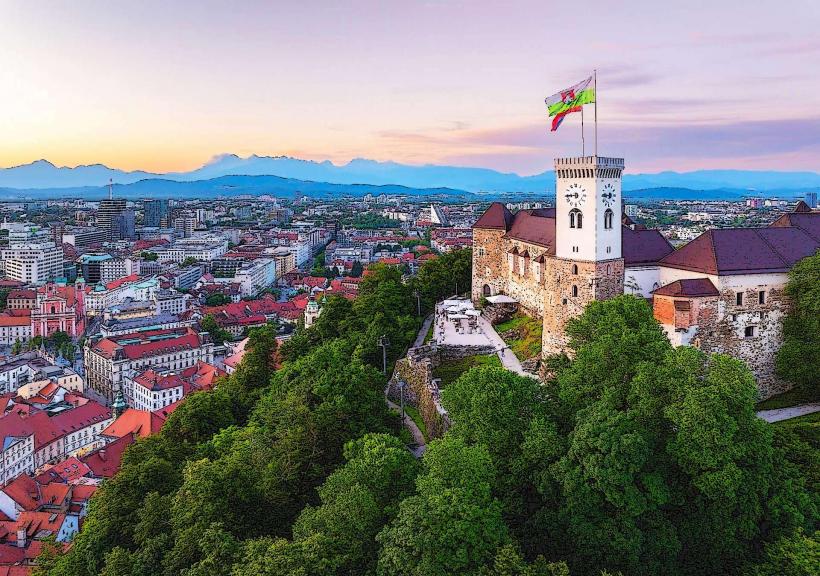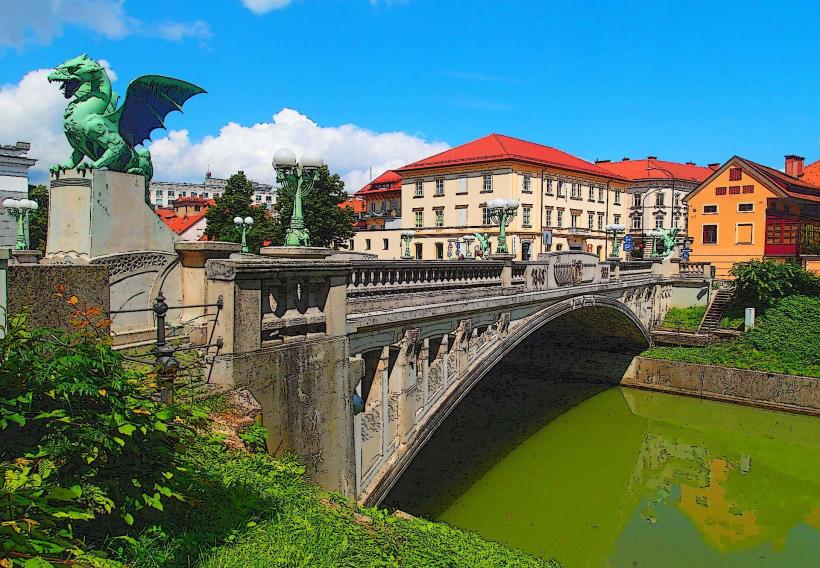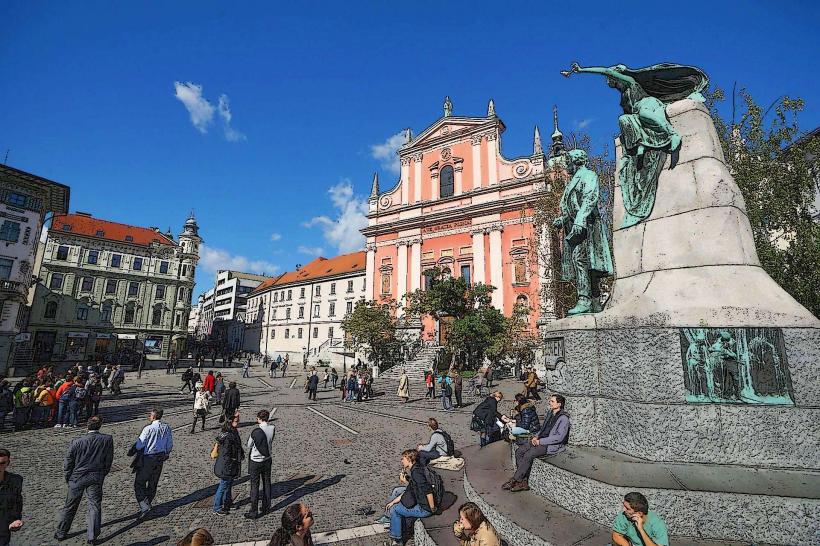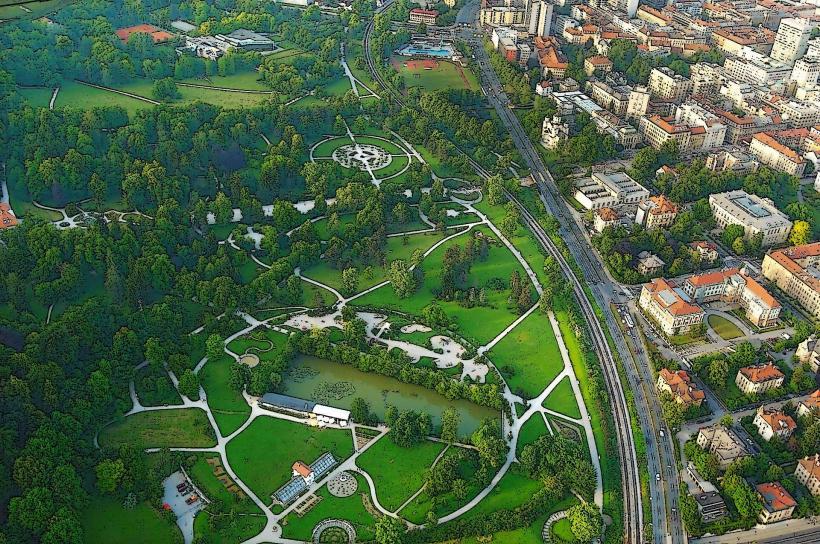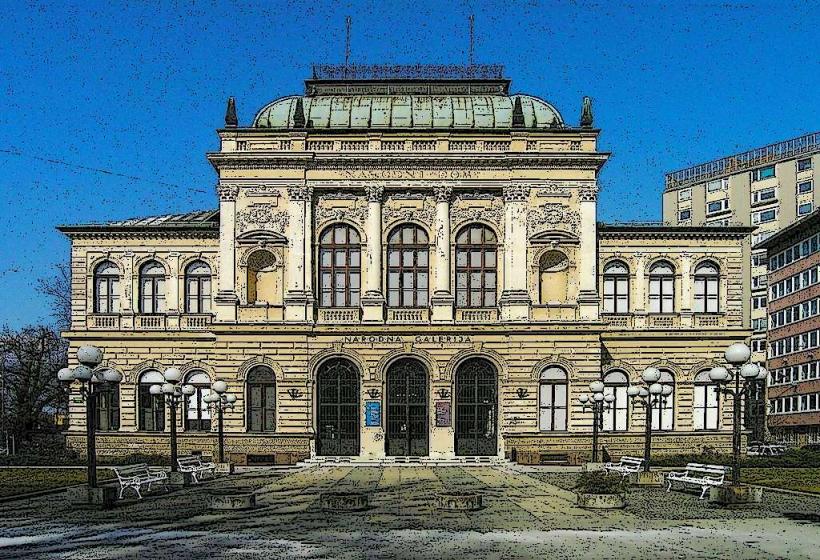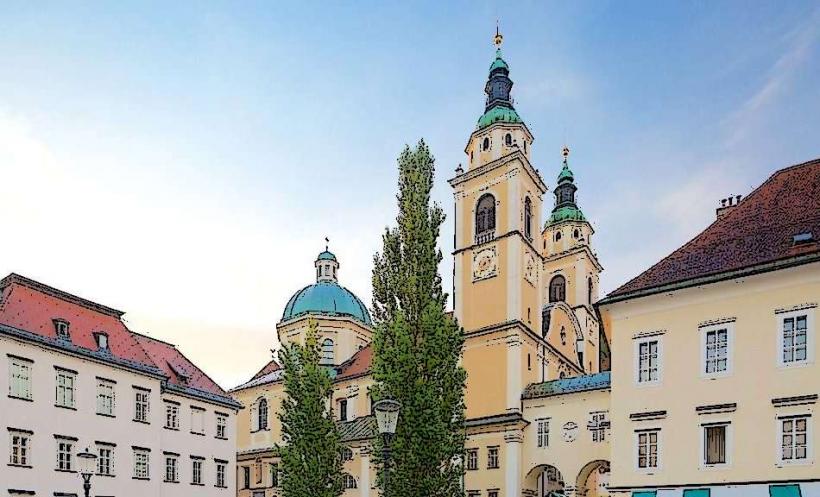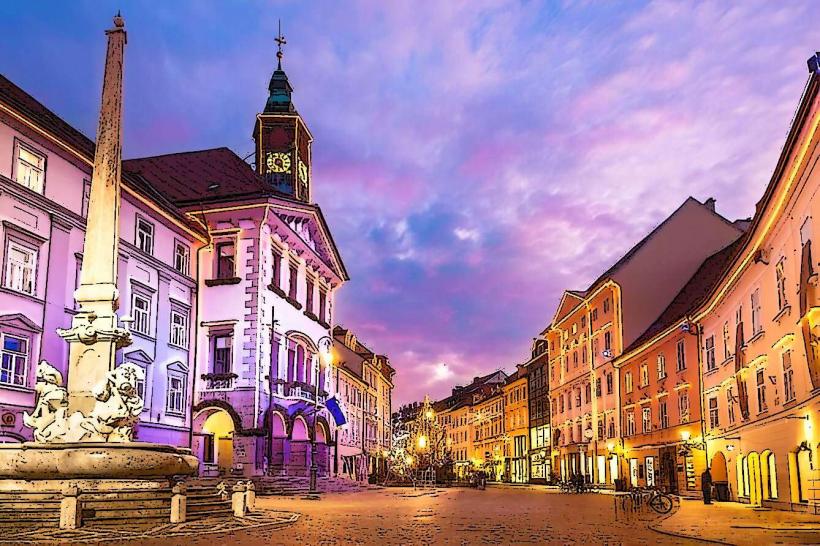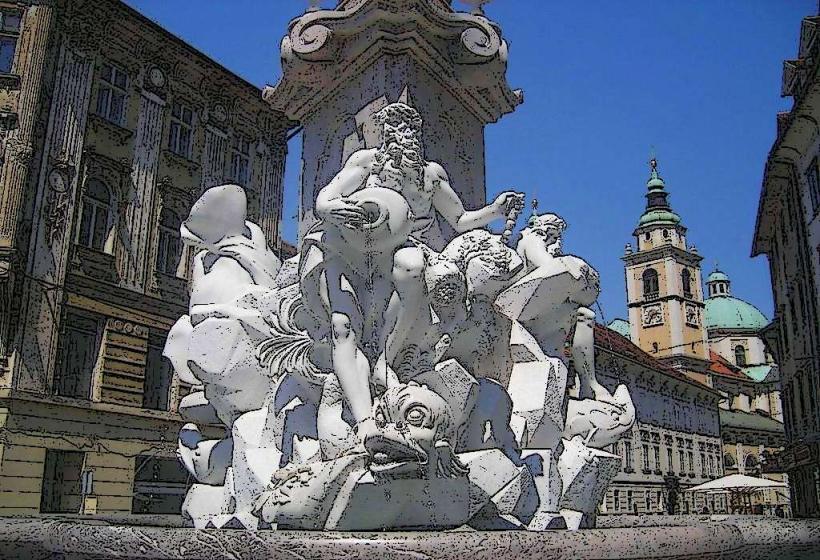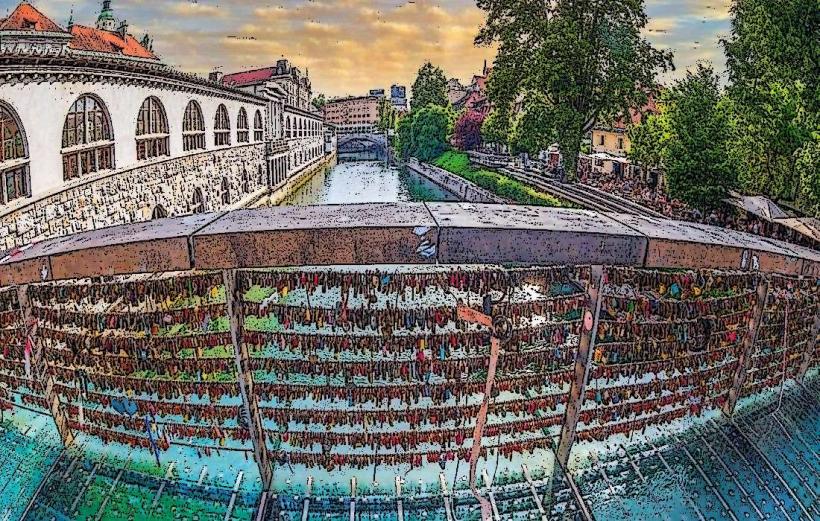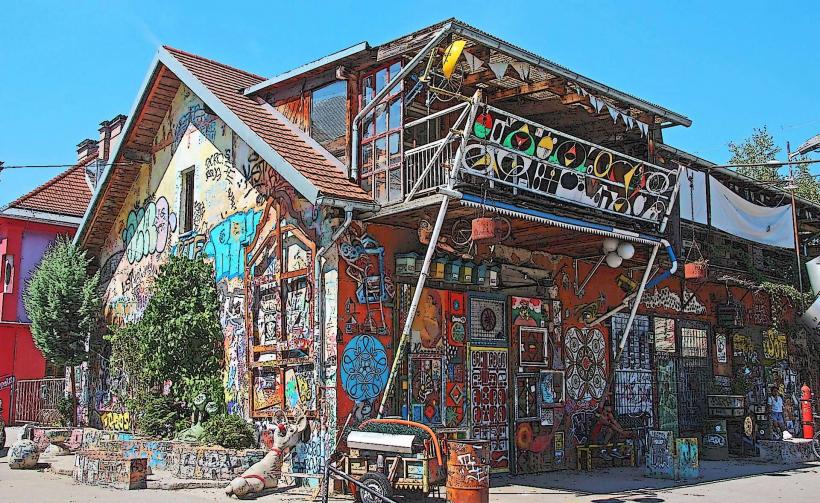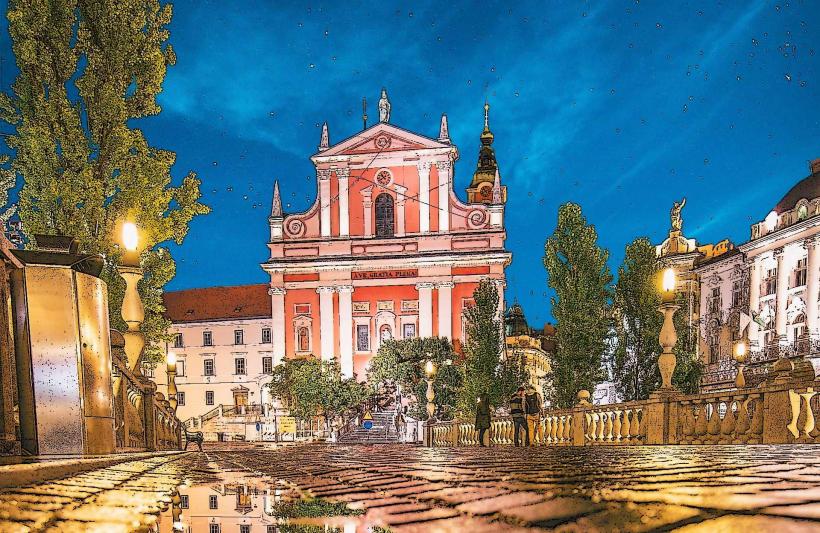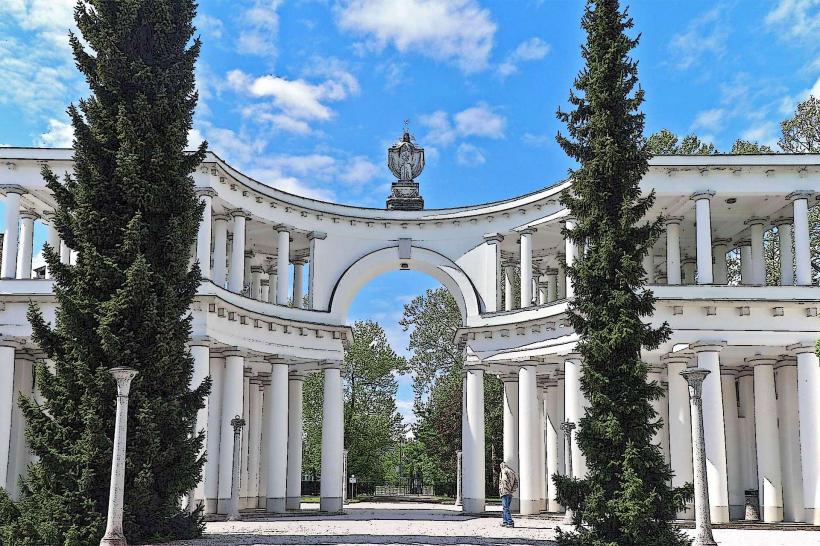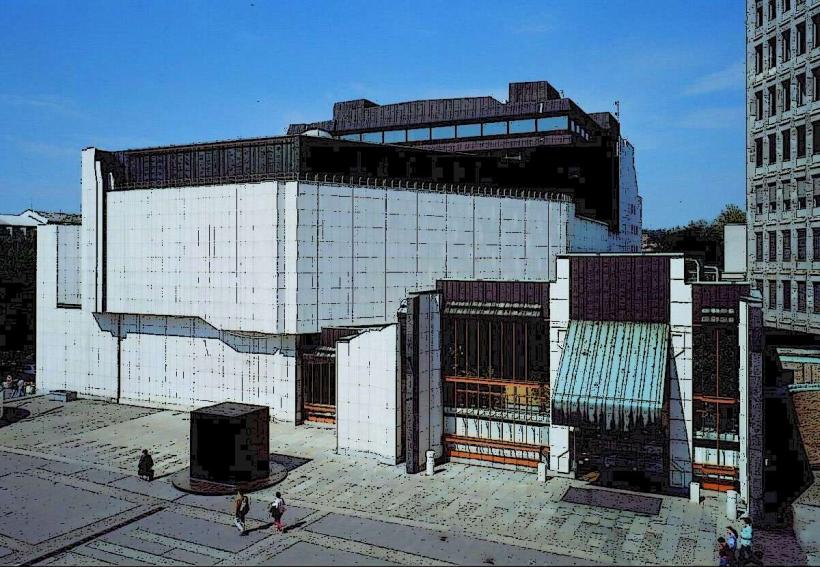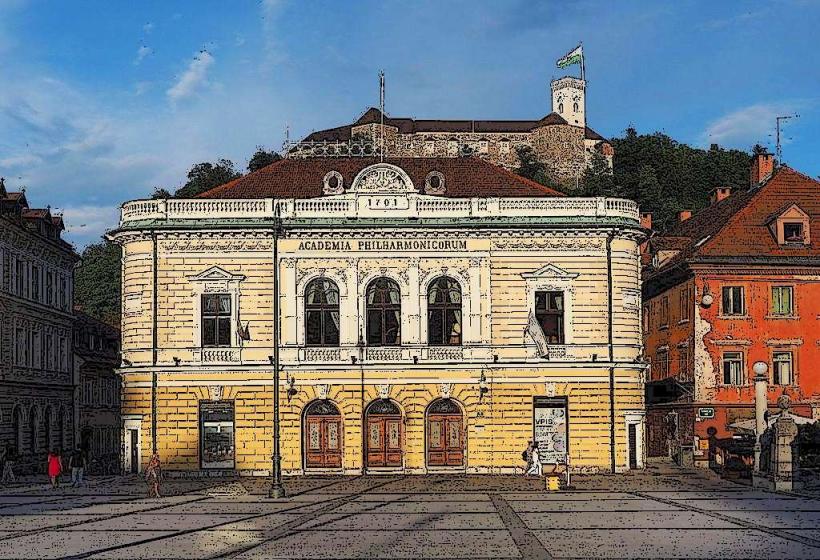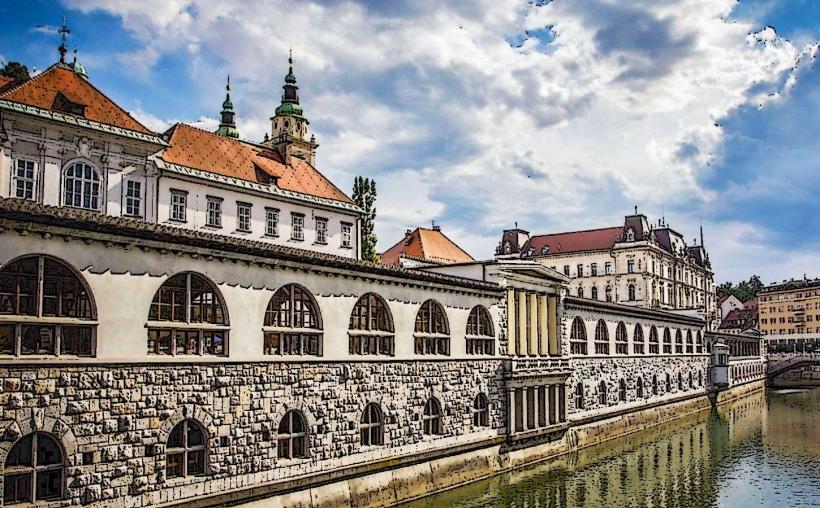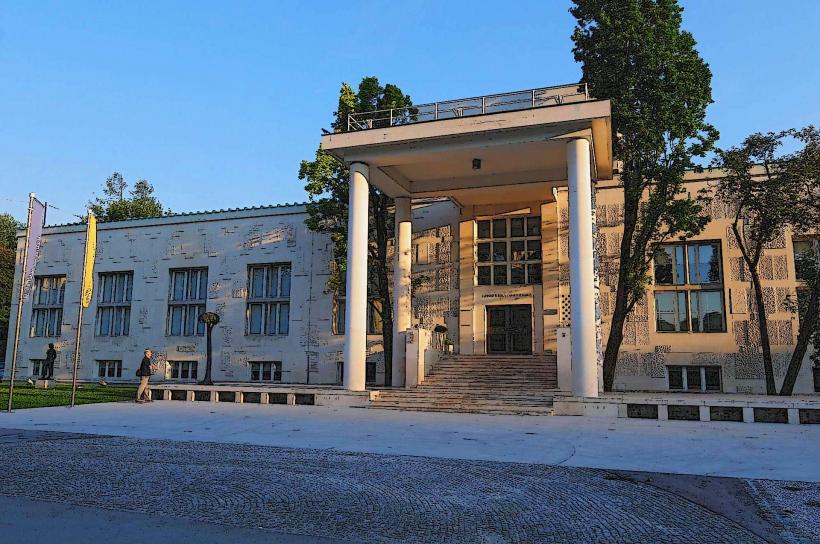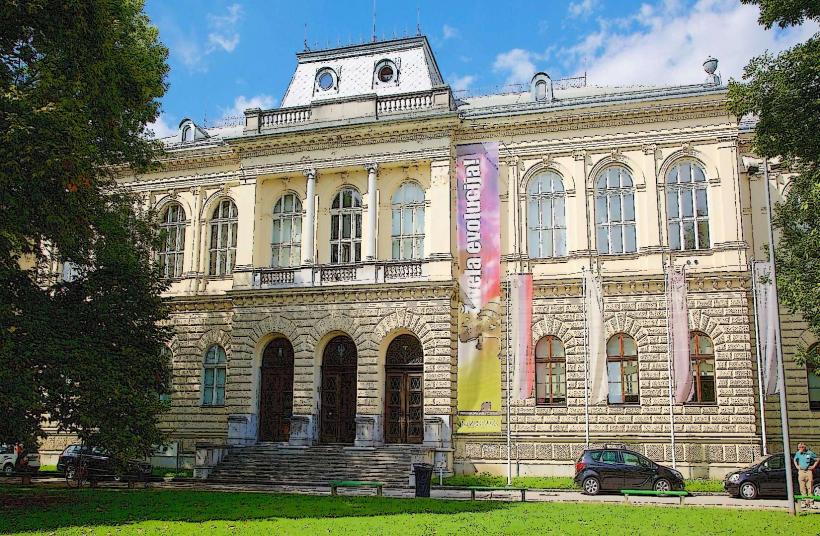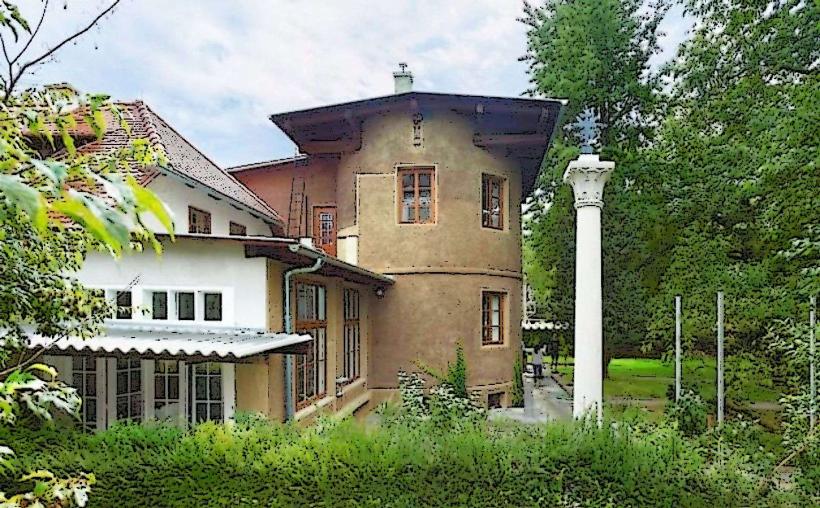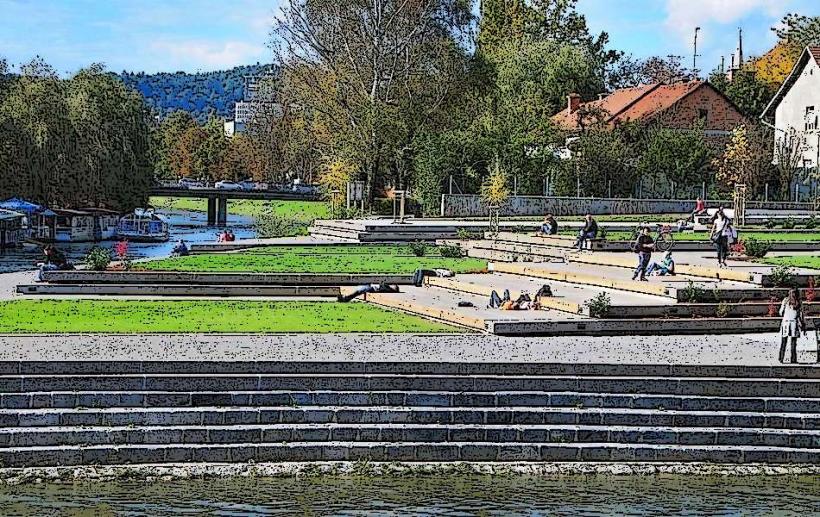Information
Landmark: Triple BridgeCity: Ljubljana
Country: Slovenia
Continent: Europe
The Triple Bridge (Tromostovje) is one of Ljubljana's most famous landmarks, located in the heart of the city. This unique bridge complex is known for its architectural beauty, historic significance, and its role in connecting two distinct areas of Ljubljana’s Old Town. It is a popular spot for tourists and locals alike, offering a picturesque view of the Ljubljanica River and the surrounding architecture.
General Overview
- Location: The Triple Bridge connects Prešeren Square (the central city square) with the Old Town on the opposite bank of the Ljubljanica River. It is located in one of the busiest and most popular parts of the city.
- Construction: The bridge was completed in 1932, and it was designed by the renowned architect Jože Plečnik. It is considered one of his masterpieces and a key example of Art Nouveau and Classical Revival design in the city.
Historical Background
Before the Triple Bridge: Prior to the construction of the Triple Bridge, there was only one bridge crossing the Ljubljanica River at this point, known as the Butcher's Bridge (Mesarski Most). This was a narrow, simple structure built in 1842 to replace an older wooden bridge, but it was unable to cope with the growing traffic in the early 20th century.
Jože Plečnik’s Vision: The idea for the Triple Bridge came about during the urban expansion of Ljubljana in the early 20th century. The city was experiencing a period of modernization, and Plečnik was commissioned to redesign the old Butcher's Bridge to better accommodate pedestrians and vehicles while also improving the aesthetic appeal of the area.
Plečnik’s Design: The Triple Bridge was designed as a series of three interconnected bridges—hence the name “Triple Bridge.” Plečnik’s plan was to create a pedestrian-friendly crossing while maintaining the traditional role of a functional bridge for vehicles. His design was groundbreaking for its time and blended classical architectural elements with modern touches.
Design and Features
The most distinctive feature of the Triple Bridge is its unique configuration of three bridges that span the Ljubljanica River, which together create an elegant and functional crossing.
Main Bridge
- The central bridge is a wide, arched stone bridge that accommodates vehicle traffic. It is flanked by two pedestrian bridges on either side, creating the distinctive "triple" structure. The stonework on the central bridge is neoclassical in style, with smooth, clean lines and simple archways.
Two Pedestrian Bridges
- The two smaller pedestrian bridges are located on either side of the central bridge. These are narrower, with low, decorative railings and balustrades. They are meant to allow pedestrian traffic to flow freely while separating it from the vehicle lanes. The design of the pedestrian bridges is sophisticated, with stone balustrades and ornate lamps.
Architectural Features
- Stonework: The bridge is constructed mainly of stone, giving it a solid, timeless look. Plečnik employed classicism and Art Nouveau styles to create harmony with the surrounding architecture, blending the old and new.
- Decorative Elements: The bridge is adorned with bronze sculptures and ornate lamps, many of which were also designed by Plečnik. These include pedestal lamps and stone lions that line the bridges.
The Bridge’s Functionality
- The design of the Triple Bridge successfully solved the problems of congestion and traffic flow at the time. The central bridge accommodates vehicles, while the two pedestrian bridges allow easy access for walkers, making the area more pedestrian-friendly.
Integration with the City
- The bridge was not only designed as a crossing point but also as a visual connection between two parts of the city: Prešeren Square and the Old Town. The integration of the bridge into the city’s urban fabric, along with its aesthetic appeal, made it a symbol of the city’s architectural vision.
Symbolism and Significance
The Triple Bridge is often seen as a symbol of Ljubljana’s transition into a modern European city while preserving its historical and cultural heritage. The design reflects Plečnik's vision of blending functionality with beauty, creating a bridge that is not only a means of transportation but also a work of art.
The lions on the bridge, along with the lamps and balustrades, evoke a sense of protection and strength, while the three separate bridges represent the harmonious coexistence of various elements of the city—tradition, modernity, and nature.
Role in Modern Ljubljana
Today, the Triple Bridge remains one of Ljubljana’s most important and iconic landmarks. It serves as a central point for the city’s pedestrian traffic, especially in the Old Town area, and has become an integral part of the city's cultural and social life.
Tourism: The Triple Bridge is a major tourist attraction, often featured in photos, postcards, and guided tours of Ljubljana. It serves as a key starting point for walking tours of the Old Town, and visitors often stop here to enjoy the views of the river and surrounding architecture.
Public Gatherings and Events: The area around the Triple Bridge is often used for public events, such as street performances, festivals, and markets. It is a focal point for both locals and tourists to meet, relax, and experience the lively atmosphere of Ljubljana.
Accessibility and Visitor Information
Pedestrian and Vehicular Access: The central bridge accommodates cars and trams, while the pedestrian bridges are designed for foot traffic. There is also a pedestrian-only zone in the vicinity, making the area perfect for walkers.
Surroundings: The Triple Bridge is located in a vibrant area of Ljubljana, with many shops, restaurants, and cafés lining the streets around the bridge. Visitors can easily access other nearby landmarks such as Prešeren Square, the Franciscan Church, and the Ljubljana Central Market.
Photo Opportunities: The Triple Bridge provides one of the best views in the city for photography, especially during the early morning or evening when the lighting highlights the beauty of the bridge and its surroundings.
Conclusion
The Triple Bridge is a stunning and iconic structure in Ljubljana that beautifully combines functionality with artistic design. Designed by the renowned architect Jože Plečnik, it serves as a testament to the city’s rich architectural heritage while providing an essential link between the Old Town and Prešeren Square. Its unique design, historical significance, and role as a central gathering place make it a must-see landmark for anyone visiting Ljubljana.

